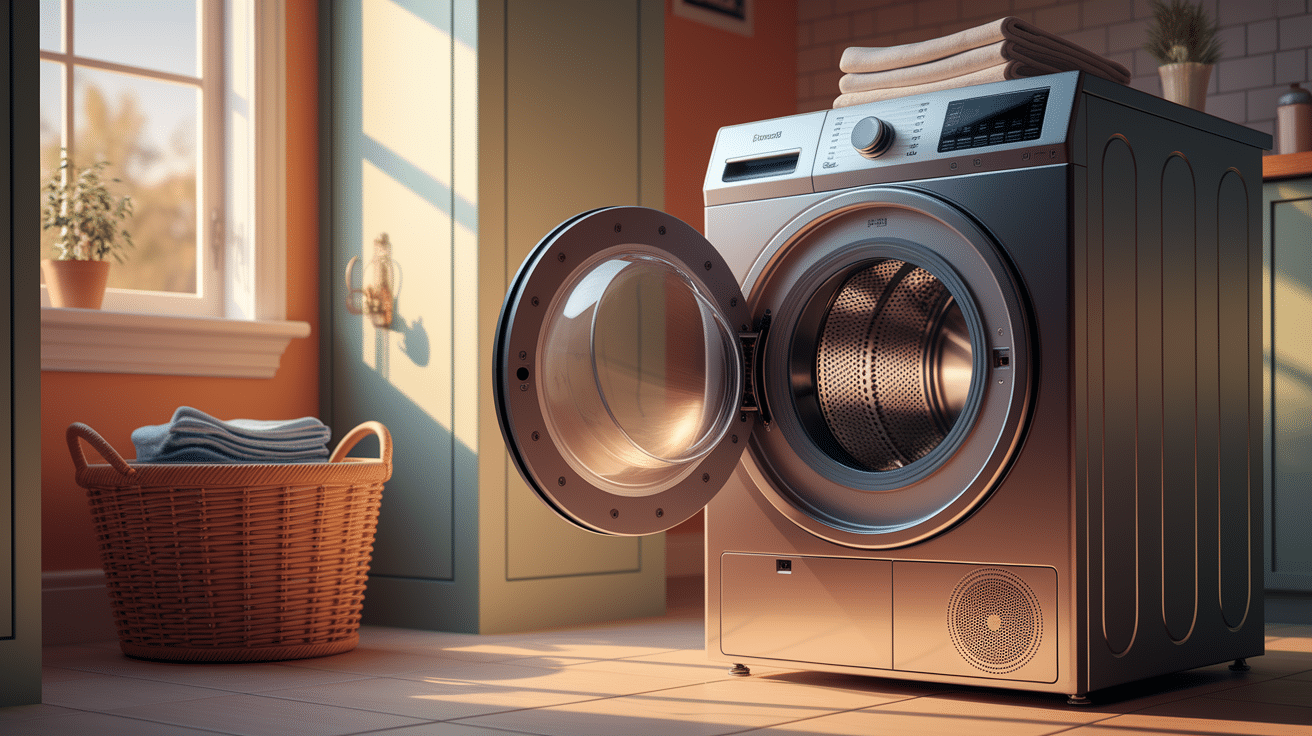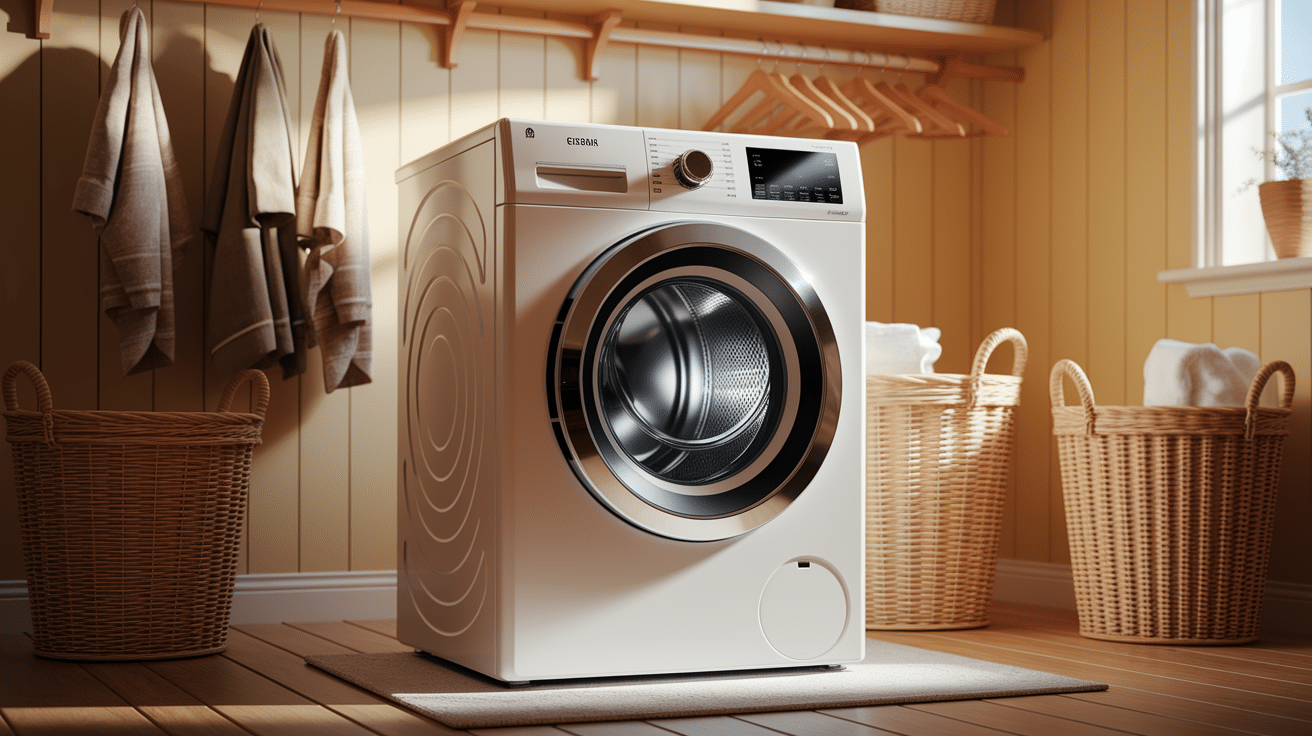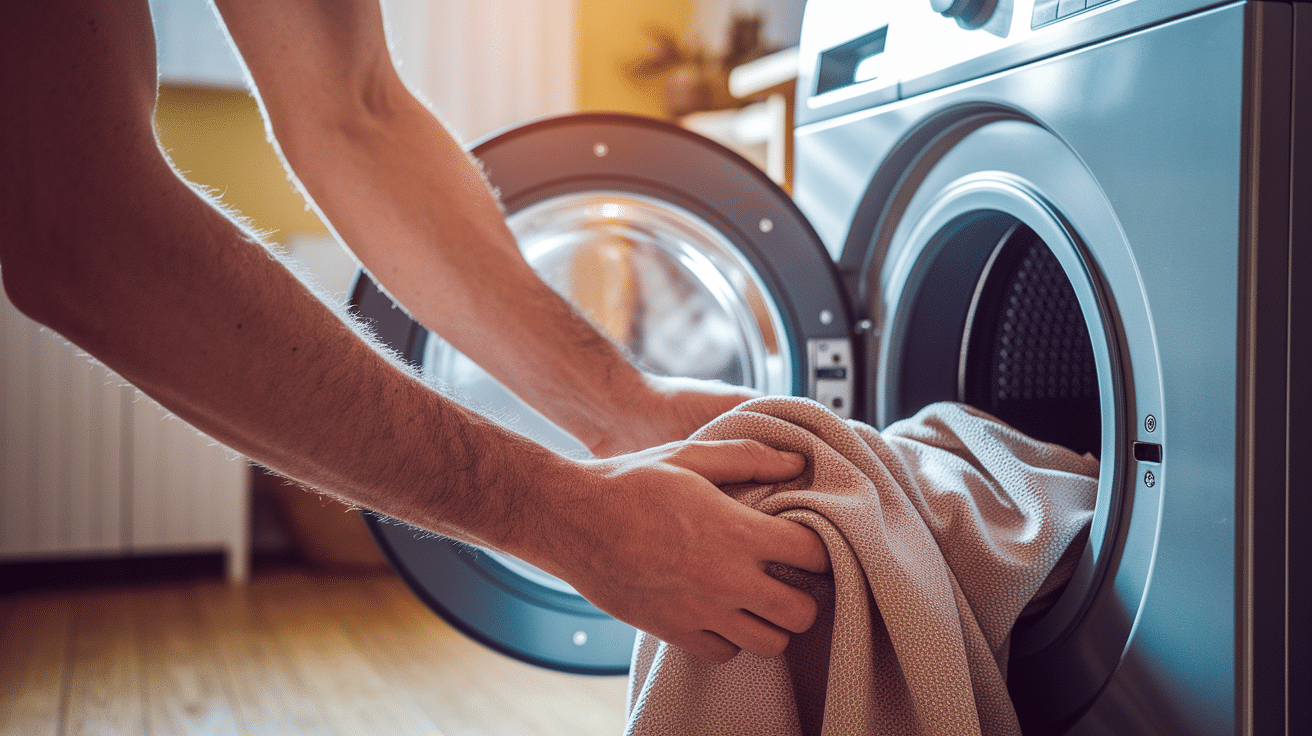All-in-One Washer-Dryer Pros and Cons

Are you wondering if an all-in-one washer-dryer unit is the right choice for your home?
With space getting tighter, especially in urban areas, more people are considering these compact machines that wash and dry clothes in a single unit.
However, before making a decision, it’s essential to understand both the benefits and drawbacks.
This blog will walk you through the pros and cons of combination washer-dryer units, helping you decide if this appliance fits your lifestyle and laundry needs, as well as best practices for maximum machine efficiency.
The Basics of All-in-One Washer-Dryer Units
Combination washer-dryers use one drum for both washing and drying. These machines fill with water, mix clothes with detergent, and spin out moisture during the wash cycle.
When drying begins, the unit changes modes. It employs either hot air circulation or condensation techniques to dry clothes completely within the same drum.
Stacked units place separate machines vertically, while side-by-side setups position independent appliances next to each other. Combination units differ fundamentally by integrating both functions.
With only one connection point needed for water, drainage, and electricity, combination units offer simpler installation. This integrated design creates a truly all-in-one laundry solution.
Pros of All-in-One Washer-Dryer Units

These versatile machines offer several advantages that make laundry day simpler, especially for those with limited space or looking to streamline their routine.
Space Conservation
All-in-one units fit perfectly in compact living spaces, making them ideal for urban apartments. Their single-unit design eliminates the need for separate laundry areas.
These units can be installed in kitchens, bathrooms, or closets, maximizing living area in small homes. Many models feature stackable designs to use vertical space effectively.
Convenience Factors
Combined units allow users to load laundry once and complete the entire washing and drying process without transferring clothes. This creates a simplified, hands-off laundry routine.
Most models offer programmable settings that automatically manage the transition from wash to dry. This reduces the mental load of tracking multiple appliance cycles.
Installation Simplicity
All-in-one units typically require only one set of water connections and a single electrical outlet. This reduces plumbing complexity and installation costs.
Many models use condenser technology, eliminating the need for external venting. This allows for flexible placement options away from exterior walls.
Utility Savings
Combined machines often use less water than running separate units. Their integrated systems recycle rinse water and optimize each cycle’s resource usage.
Energy consumption may be lower as these units coordinate the washing and drying phases. Heat generated during operation can be efficiently transferred between functions.
Cons of All-in-One Washer-Dryer Units

While convenient, these machines have some downsides that users should consider to see if the benefits are worth it for their lifestyle.
Performance Issues
Load capacity in combination units is typically restricted to 2-4 cubic feet. This limitation forces users to wash smaller loads more frequently.
Complete cycles can take 3-6 hours from start to finish. The extended timeframe means planning laundry schedules becomes more critical.
Technical Considerations
Heat and moisture management present challenges in compact units. Interior components must handle temperature extremes while protecting electronic systems.
Condenser systems collect water that requires manual emptying. This maintenance task adds an extra step that’s unnecessary with vented systems.
Longevity
Combined units experience more wear due to continuous operation through multiple functions. This accelerated use often leads to more frequent repair needs.
Most all-in-one units have shorter lifespans than separate machines. The typical service life ranges from 7-10 years versus 10-15 years for standalone appliances.
Cost Analysis
Quality combination units require a significant upfront investment. Premium models cost between $1,000 and $2,000, comparable to buying separate high-end machines.
Repair expenses tend to be higher for integrated systems. When one function fails, both washing and drying capabilities may be compromised simultaneously.
Best Practices for Maximizing Machine Efficiency
To get the most out of your washing machine and ensure your laundry comes out fresh and clean every time, it’s important to follow a few simple yet effective practices.
These tips will help you extend your machine’s lifespan, optimize its performance, and keep your clothes looking their best.
1. Loading Recommendations
The way you load your washing machine plays a crucial role in ensuring your laundry is cleaned efficiently and without any damage.
By following some simple guidelines for capacity, sorting, and placement, you can maintain the balance in the drum, prevent overloading, and ensure your clothes get the proper wash and dry they need.
- Optimal Capacity: Fill the washer to 70-80% of its capacity to maintain efficiency.
- Sorting for Success: Separate fabrics by weight and type to prevent unbalanced loads.
- Space Management: Avoid overstuffing, which can cause incomplete drying or inefficient washing.
- Proper Item Placement: Place heavier items at the bottom, lighter ones on top for balanced motion.
- Movement: Ensure that the clothes can freely move during the wash cycle for better cleaning results.
2. Selecting the Right Detergent
Choosing the right detergent is key to maintaining your washer’s efficiency. Use only HE (High-Efficiency) detergents that are formulated specifically for front-loading machines.
Measure the detergent based on the size of your load to avoid excess soap residue. Standard powder detergents are not recommended, as they may not dissolve fully, leading to a build-up.
Liquid or pod formulations provide more consistent and effective results.
3. Cycle Selection Based on Load Type
| Load Type | Recommended Cycle | Description |
|---|---|---|
|
Lightly Soiled Items |
Quick Wash | Fast, efficient cleaning for lightly soiled laundry. |
|
Heavily Soiled Clothing |
Heavy-Duty | Deep cleaning for towels and dirtier garments. |
|
Delicate Fabrics |
Delicate/Hand Wash | Gentle cycle for sensitive fabrics needing special care. |
| Everyday Loads | Eco Cycles | Maximizes water and energy efficiency for regular loads. |
|
Shrink-Prone Items |
Separate Handling | Wash separately and air-dry to avoid shrinking. |
4. Maintenance Tips for Longevity

Who Benefits From All-in-One Washer-Dryer
All-in-one washer-dryer units are perfect for various lifestyles and living situations, offering a compact and efficient laundry solution.
- Urban Apartment Residents: Ideal for those with limited space, providing the convenience of in-home washing without needing a dedicated laundry room.
- Tiny Home Enthusiasts: Perfect for maximizing functionality in extremely small living spaces, ensuring laundry tasks don’t take up valuable room.
- RV and Boat Owners: These units are designed for mobile living, using less water and electricity while meeting the needs of limited space.
- Households with Limited Space: Great for small cabins, cottages, or older homes lacking dedicated utility spaces.
Should You Buy an All-in-One Washer-Dryer Unit

When deciding whether to purchase an all-in-one washer-dryer unit, it’s important to consider your living situation and laundry needs.
These combination machines are ideal for renters or small households due to their space-saving design. However, larger families may find them less effective due to limited capacity and slower drying times.
Before purchasing, make sure to measure your available space carefully. Take into account the width, depth, height, and ensure there’s adequate clearance for proper ventilation and easy access.
Quality all-in-one units typically range from $800 to $2,000, with additional costs for installation if any electrical or plumbing modifications are needed.
If a standard combination unit doesn’t meet your needs, consider alternatives such as portable washers paired with compact dryers, stackable washer-dryer units, or even utilizing laundry services for larger loads.
Final Thoughts
After learning the pros and cons of all-in-one washer-dryer units, you now have a clearer idea of whether this space-saving solution fits your lifestyle.
If you live in a smaller space, need a convenient and efficient machine, and are comfortable with a longer drying time, this unit could be an ideal choice.
However, if you have a large family or frequently do laundry in bulk, you might want to consider other alternatives. Whatever your decision, understanding both sides will ensure you pick the best appliance for your needs.






